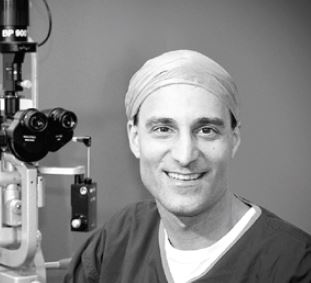
At Eye Surgeons Bendigo, we employ a painless, no-stress technique. It’s same day, walk-in walk-out surgery.
No general anaesthetic is employed and I do not use needles around the eye; hence there is no risk of damage to the eyeball, eye muscles or large blood vessels. Blood thinning medications are not ceased beforehand and no suture is placed in the eye at the surgery conclusion.
Unique to our technique, no cover or patch is ever worn over the eye and vision is immediately restored. Also, there are no restrictions so everything from walking, exercise, gardening, recreational activities, reading and television and the like can be started immediately.
There are only a handful of very skilled, highly regarded cataract surgeons in Australia using this technique.
So, what are Cataracts?
Nearly every aging eye will develop some form of opacity in the normally crystal clear lens inside the eyeball. This is situated behind the pupil. When the opacity attains a certain density or cloudiness, visual symptoms ensue. These could be as benign as needing a frequent change of glasses. Initially, by doing this, vision is restored back to before. Gradually however, even glasses will not correct the lost vision. Manifestations of this include: difficulty seeing fine print, reading street signs, or enjoying clarity on television; glare; problems with night driving; noticing drab colours; and diminished brightness. As the cataracts worsen, the vision drops and in advanced cataracts there is near total loss of sight.
Cataract surgery is the only remedy for this. It has success in removing the clouds and restoring improved quality vision, colour and brightness. The other attractive benefit is that often spectacles may only be required just for reading, or, not at all. In fact, we do an increasing number of cases just to rid the use of spectacles entirely, whether there is cataract or not.
The cloudy lens (cataract) is removed through a micro incision as small as 2.2mm. An artificial lens (intraocular lens implant) is then put into the eye, in the same place as where the cataract was. This artificial lens is specific to each eye. It has a special power and often is toric in design so all astigmatism is eliminated. The eye can be left focused for distance, near, or both. This prosthetic lens stays inside the eye forever and will never degrade. It needs no maintenance or replacement.
Integral to success is a thorough eye examination, accurate ocular measurements, a full brief on expected outcomes, and experience in the selection of the correct lens implant. Thereafter, surgery by a highly experienced and skilled surgeon will ensure the best result.
By Dr Farokh Irani MBBS (melb), Dip Anat, FRANZCO
– ophthalmic surgeon – Eye Surgeons Bendigo

